Issue Archive
Table of Contents
BLOOD COMMENTARIES
PLENARY PAPER
Decoding functional hematopoietic progenitor cells in the adult human lung
In the last decade, it has become clear that hematopoiesis can occur in the lungs. Studying matched lung, bone marrow, and blood samples from deceased organ donors, Conrad and colleagues combined classical cell biology, single-cell and spatial transcriptomics, and transplantation experiments to reveal the quality and quantity of hematopoietic stem and progenitor cells in the lung and to define the stem cell niche. Stem cells in the lungs reside in the distal alveolar vasculature and are comparable to those of bone marrow in quantity and transplantation potential, but they have a distinct transcriptomic profile that favors quiescence. Further, these cells are mobilized into the blood and contribute significantly to stem cell products for transplantation.
SPECIAL REPORT
Clinical-genomic profiling of MDS to inform allo-HCT: recommendations from an international panel on behalf of the EBMT
This Special Report by Gurnari and colleagues discusses an international group of experts convened by the European Society for Blood and Marrow Transplantation (EBMT) who reviewed recent registry outcome data and provided their recommendations for assessing which patients with myelodysplastic syndromes (MDS) could benefit from allogeneic hematopoietic stem cell transplantation (allo-HCT) and when this should be applied. Their advice includes how to use the updated classification systems and apply molecularly informed prognostic scores. This article also tackles issues arising when germ line mutations are suspected or known, and when considerations around conditioning intensity and donor selection are required.
HOW I TREAT
How I treat higher-risk MDS
Not all patients with higher-risk myelodysplastic syndromes (MDSs) warrant or are suitable for allogeneic stem cell transplantation. Mina and Komrokji discuss their current approaches to unselected patients, outlining a logical decision-making tree to guide clinicians in determining treatment choices and sequence, including those proceeding to allogeneic transplantation. The cases the authors discuss deal with both common and uncommon scenarios, including MDS with TP53 and IDH1 mutations.
CLINICAL TRIALS AND OBSERVATIONS
Donor regulatory T-cell therapy to prevent graft-versus-host disease
Clinical Trials & Observations
Regulatory T cells (Tregs; CD4+CD25hiFoxp3+ lymphocytes) mitigate graft-versus-host disease (GVHD) in murine models of allogeneic stem cell transplantation (allo-SCT). In a single-center study of 44 patients, Meyer and colleagues evaluated a myeloablative allo-SCT regimen incorporating defined-dose Treg supplementation of CD34+ cell infusion followed by posttransplant infusion of conventional T cells and limited posttransplant immune suppression. Comparison to a contemporaneous cohort receiving standard GVHD prophylaxis suggests this approach is associated with lower rates of acute and chronic GVHD and nonrelapse mortality. This promising regimen is being further tested in a randomized phase 3 trial.
IMMUNOBIOLOGY AND IMMUNOTHERAPY
Reactive oxygen species regulate early development of the intestinal macrophage-microbiome interface
LYMPHOID NEOPLASIA
DLBclass: a probabilistic molecular classifier to guide clinical investigation and practice in diffuse large B-cell lymphoma
Diffuse large B-cell lymphoma (DLBCL) is a heterogeneous disease, posing challenges to implementation of precision medicine strategies. To enable advances in therapy choice, Chapuy et al report on the development of DLBclass, a probabilistic, neural network–based classifier that can assign individual cases of DLBCL into 1 of 5 genetic subtypes, using mutation, copy number, and structural variant data. DLBclass is freely available online and represents a step toward matching treatment to both patient- and disease-specific characteristics.
MYELOID NEOPLASIA
Defining 2 biologically and clinically distinct groups in acute leukemia with a mixed phenotype
The quest to best classify acute myeloid leukemias (AMLs) for biological uniformity and treatment selection is ongoing. Through a comprehensive multiomic study of 100 cases of acute leukemia with mixed phenotype, Galera and colleagues demonstrated that de novo mixed-phenotype acute leukemia is biologically distinct from AML with a mixed phenotype. These findings have implications for treatment selection and prognosis.
PHAGOCYTES, GRANULOCYTES, AND MYELOPOIESIS
NETs persisting in vasculature undergo self-renewal with consequences for subsequent infection: a mouse model study
A prominent function of neutrophils during inflammation is formation of neutrophil extracellular traps (NETs) through release of DNA, histones and cytotoxic proteins. Using in vivo intravital microscopy in animal models of sepsis, Santocki et al showed that although DNase removed the DNA component, NET remnants stayed attached to the vascular endothelium, with histones inducing the formation of subsequent waves of NETosis. The persistence of NET remnants can provide protection against subsequent infection but may also exacerbate tissue injury in some circumstances.
THROMBOSIS AND HEMOSTASIS
Protection of β2GPI-deficient mice from thrombosis reflects a defect in PAR3-facilitated platelet activation
β2-Glycoprotein I (β2GPI) is an abundant plasma glycoprotein and major autoantigen in antiphospholipid antibody syndrome, but its physiological role in coagulation has been unclear. Kulkarni and colleagues report that β2GPI-deficient mice are relatively protected from thrombosis and that this protection arises because of reduced protease-activated receptor 3 (PAR3)–facilitated platelet activation. The authors’ data establish β2GPI as having a prothrombotic role during homeostasis.
LETTER TO BLOOD
BLOOD WORK
-
Cover Image
Cover Image
![issue cover]()
Representative image shows the second wave of neutrophil extracellular traps (NETs) released in liver sinusoids 14 days after induction of endotoxemia. NETs are composed of extracellular DNA (bright green), neutrophil elastase (violet), and histone H2A.X (red) colocalization (violet); liver parenchyma/hepatocytes are dark green. See the article by Santocki et al on page 2070.
- PDF Icon Front MatterFront Matter
- PDF Icon Table of ContentsTable of Contents
- PDF Icon Editorial BoardEditorial Board
Advertisement intended for health care professionals
Email alerts
Advertisement intended for health care professionals


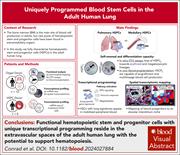
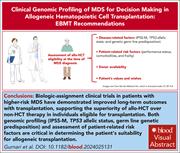
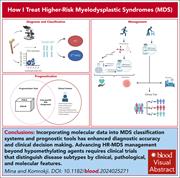
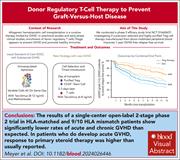
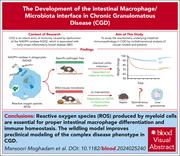
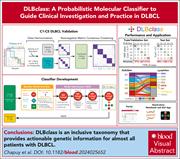

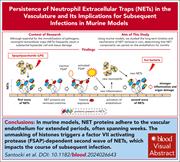
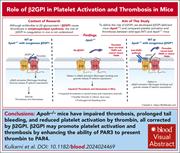

Breathing life into the hematopoietic potential of the lung